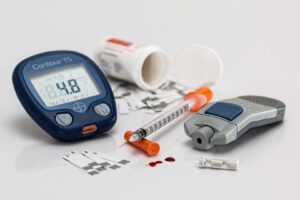Stemming the silent diabetes epidemic

Long before the coronavirus disease 2019 (COVID-19) pandemic, a silent epidemic of diabetes was causing blindness, lower limb amputation, kidney failure, heart attack, stroke and death among hundreds of millions of people. Worse, the prevalence of diabetes continues to increase globally.
Together with cardiovascular diseases, hypertension, cancers, and chronic respiratory diseases, diabetes is one of the world’s four major noncommunicable diseases (NCDs), presenting a major threat to global health.
Today, an estimated 537 million adults around the world are living with diabetes, according to the 10th edition of the International Diabetes Federation (IDF) Diabetes Atlas. Four in five adults (80%) with diabetes live in low- and middle-income countries (LMICs), including almost 4 million Filipino adults. This number is predicted to rise to 643 million by 2030 and 783 million by 2045. Nearly 1 in 2 people who have diabetes are undiagnosed. Diabetes was responsible for 6.7 million deaths in 2021 — 1 every 5 seconds. It cost at least $966 billion in health expenditure — a 316% increase over the last 15 years.
Diabetes is a chronic disease that occurs either when the pancreas does not produce enough insulin (hormone that regulates blood sugar) or when the body cannot effectively use the insulin it produces, a condition known as insulin resistance.
Diabetes in its early stages is often asymptomatic. When symptoms do occur, these may include increased thirst and urination, increased hunger, fatigue, blurred vision, numbness or tingling in the feet or hands, sores that do not heal, and unexplained weight loss. Some people do not find out they have the disease until they have diabetes-related health problems, such as blurred vision or heart trouble. If you experience these symptoms, consult your doctor immediately.
There are two types of diabetes, type 1 and type 2. The most common form is type 2 diabetes. One is more likely to develop type 2 diabetes if you are not physically active and are overweight or obese. Extra weight sometimes causes insulin resistance and is common in people with type 2 diabetes. Other risk factors include being 45 or older, a family history of diabetes, high blood pressure, and a low level of HDL (“good”) cholesterol or a high level of triglycerides.
The good news is there are steps to lower one’s risk of developing diabetes. If one is overweight, it is best to shed the excess pounds and keep these off. A person may be able to prevent or delay diabetes by losing 5%–7% of their starting weight. For instance, if a person weighs 200 pounds, the goal would be to lose about 10–14 pounds. A person may get at least 30 minutes of physical activity or talk to a doctor about the best exercise regimen. Eat a high-fiber, low-fat diet rich in fruits, vegetables, and fish. Eat smaller portions and drink water instead of sweetened beverages.
To improve access to diabetes care in LMICs, there is a need to provide increased and sustained financing for diabetes prevention and care; enact fit-for-purpose regulatory approval frameworks and policies to ensure the right products are readily available; establish or strengthen existing supply chain infrastructures; provide healthcare professionals with the right tools and training for the prevention, diagnosis and control of the disease; and finally, empower people with quality information so they can better manage their condition.
In April 2021, the World Health Organization (WHO) launched the Global Diabetes Compact to unite stakeholders across sectors, including people living with diabetes, to shape a common agenda and drive action toward improved solutions to diabetes treatment and care in LMICs.
The biopharmaceutical industry committed to collaborate with WHO, governments, civil society, health system stakeholders, and other private sectors to scale up existing initiatives and explore new collaborative models.
The biopharmaceutical industry is likewise involved in numerous partnerships on the ground, focusing its efforts on disease awareness and prevention, diagnosis, treatment, and control. They are also engaged in several collaborations for the prevention, timely testing and diagnosis, access to medicines, and management of patients on a course of treatment for diabetes.
But the work is not yet done. At present, there are more than 160 medicines in development to manage diabetes and related conditions to help save lives.
Teodoro B. Padilla is the executive director of the Pharmaceutical and Healthcare Association of the Philippines (PHAP), which represents the biopharmaceutical medicines and vaccines industry in the country. Its members are at the forefront of research and development efforts for COVID-19 and other diseases that affect Filipinos.




